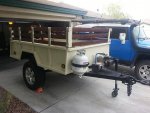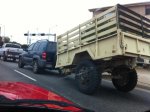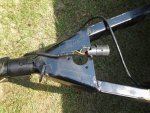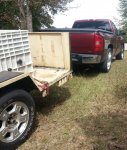Yeah, we already had this discussion on another site. You never did show them being used in the most extreme ways you say are safe. You have a good point about needing to use a correctly sized pintle. But running with considerably mismatched geometry, all sorts of extra forces are still being placed on both the riser plate and the receiver itself. If the plates still bend that easily just because of a little binding, I am not going to trust their performance in an accident, aggressive braking or maneuvering, or more extreme off-road situations. While I hope for the best circumstances, I plan for the worst contingencies. And that means a substantial margin of safety. I would not want to be in an accident and have a loaded M101A2 shear a tall riser plate off and come through the back of my lower, smallish SUV. Others mileage may vary.
Since they are engineered for all the above except for aggressive off roading (that's why the .mil pintles rotate) which I wouldn't use a 12" riser for, I wouldn't worry about it. And since we have had all of the above happen, aggressive braking, accidents, maneuvering, ect, experience tells me not worry about a 3k load doing something a 9k load hasn't. I believe I posted a photo on a hitch that pulled 8 or 9k that day so I have no idea what you are talking about.
If you are running with mismatched geometry, that's operator error and the fault of the operator not the product. Basically, if you are doing that you aren't competent enough to tow a trailer and shouldn't be. It's hard to engineer out stupidity. I think every bent plate post I have seen here was due to backing and not the conditions you list.
For some reason reese, etrailer, curt, ect have put significantly more engineering and thought into the product than you since they are at risk if their engineering is wrong as you claim it is. You should be able to easily post evidence that these hitches aren't safe in the conditions you post about, Boomer.






